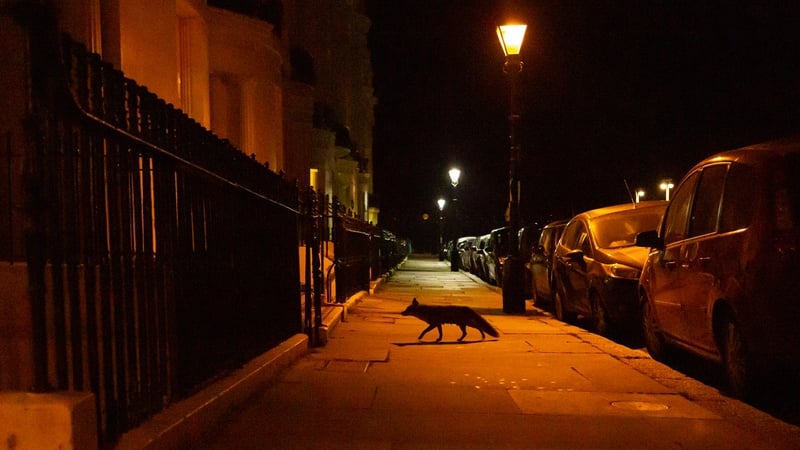Published on RTE online https://www.rte.ie/news/connacht/2024/1008/1474244-foxes/?fbclid=IwY2xjawGJv9ZleHRuA2FlbQIxMAABHfPVfXEWUG4BA5GeBJa-zZdKJ7uKSjYSFBQRx3QKrCpUJ_F3rIRCN2A2sg_aem_boFEsApqQyeauZrmmi_36Q this item asks the public to do something no animal welfare group in the UK would: ask for fox sightings and locations.
Mt advice is to always check whether your local authority, in the UK or Eire "practices fox control" because although fox control is impossible (get rid of one fox and others will move in) it is also anti-environmental. Every town and city has a rodent problem from mice to rats and rodenticides used by authorities or the public are dangerous to hedgehogs, owls, hawks as well as domestic pets.
Each year pets and wildlife die horribly because of rodenticides.
The best rodent disposal is carried out by foxes -as in the United States where foxes as well as coyotes do the same work and ditto jackals in other parts of the world. One vixen was observed having killed and returned to her cubs in a den with six rats in an half hour period. A public establishment in Bristol keep their fox safe as it is the best pest controller they have ever had and its success is counted by the rat tails (the only part foxes do not eat) found every week -in one weekend 16.
We have found care homes and even an hospice will not use rodenticides as they have a fox and since the foxes have been around -no more rats.
If you see rats in your neighbourhood you need to realise that the fox-human relationship is symbiotic. The old fox types like the Cur fox was attracted to human habitation because of the disposal of food waste which attracted rodents and so foxes had a good place to hunt as well as additional food. In countries with jackals the same thing applies and in the 19th century it was noted how British military expeditions in India were followed by jackals but once the expedition was over -no more jackals because no more waste food. The same applies to coyotes which in some parts of the United States you will see more often than urban foxes.
During the 19th century, through hunting, the island of Ireland saw its fox population drop to the point that English hunts sent "gift foxes". For that reason, foxes in Northern Ireland and Eire would have European Vulpes vulpes DNA; it is not because this fox was the original fox type in the UK and Ireland but because they were exported from parts of Europe since the 1700s when Old fox types declined in number. It was also the poor transportation and housing of foxes before being sent on that introduced mange to the UK (unknown in the UK prior to the 19th century.
Foxes are NO THREAT to domestic pets so get that idea out of your head. In the countryside rabbits are top of the prey list while in towns the rat is number one!
In the UK the decline in fox numbers since the 1990s (likely well before that) is an indicator that something is wrong in the ecological balance which is something we are looking into. If you have a healthy and thriving fox population then you know there are plenty of prey around and foxes will keep those in check.
As long as the locations, etc, are not used for 'pest control' then the final results of the survey should be interesting.

Researchers at the University of Galway are appealing to the public to register sightings of urban red foxes.
The survey is particularly focused on the largest cities across the island - Dublin, Belfast, Cork, Limerick, Galway, Derry and Waterford.
The increased sightings of Irish wildlife in cities is attributed to the availability of food and shelter.
Red foxes in particular have been known to thrive in built up areas because of increased food opportunities, such as discarded food, insects and fruit.
They also hunt other urban animals such as rats, mice, and pigeons
Speaking on RTÉ's News at One programme, Dr Colin Lawton of University of Galway's School of Natural Sciences said the resources which urban foxes are availing of has caused for their behaviour to differ from rural foxes.
"A recent study has shown that foxes seem to be getting more domesticated in urban areas, they're actually looking cuter, they look more like dogs," Dr Lawton said.
"Their muzzles are getting shorter, and they've got a more domed head, and that's because they've become more appealing to people and more likely to get treats in gardens" he added.
The aim of the survey is to create a distribution map of foxes and to better understand humans’ relationships with the animals.
"A lot of people are delighted to see them, because we don’t see much wildlife in our urban areas, but then others may have problems.
"They can be messy, they can make a lot of noise, and so we’re looking to make sure that we can manage the human-wildlife conflict, without harming the foxes in any way".
Members of the public can record their sightings using the Urban Fox Survey page, hosted by the National Biodiversity Data Centre.

No comments:
Post a Comment